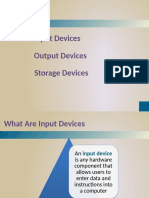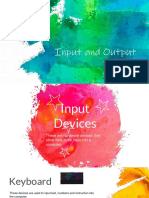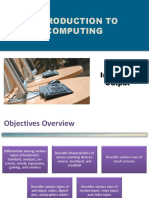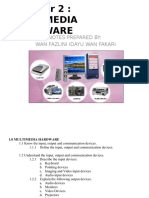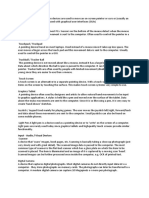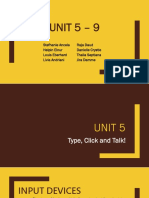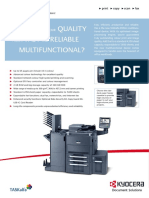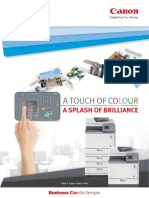0% found this document useful (0 votes)
15 views60 pagesInput and Output
The document provides an overview of input and output devices used in computers and mobile devices, detailing various types of input methods such as keyboards, mice, and touch screens. It also discusses output devices, including printers and display technologies, highlighting their functions and characteristics. Additionally, it covers specialized devices like biometric readers, scanners, and assistive technology for enhanced user interaction.
Uploaded by
Night 77Copyright
© © All Rights Reserved
We take content rights seriously. If you suspect this is your content, claim it here.
Available Formats
Download as PDF, TXT or read online on Scribd
0% found this document useful (0 votes)
15 views60 pagesInput and Output
The document provides an overview of input and output devices used in computers and mobile devices, detailing various types of input methods such as keyboards, mice, and touch screens. It also discusses output devices, including printers and display technologies, highlighting their functions and characteristics. Additionally, it covers specialized devices like biometric readers, scanners, and assistive technology for enhanced user interaction.
Uploaded by
Night 77Copyright
© © All Rights Reserved
We take content rights seriously. If you suspect this is your content, claim it here.
Available Formats
Download as PDF, TXT or read online on Scribd
/ 60
